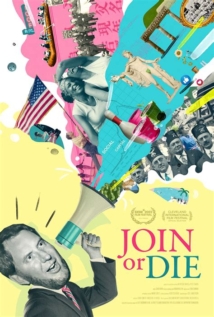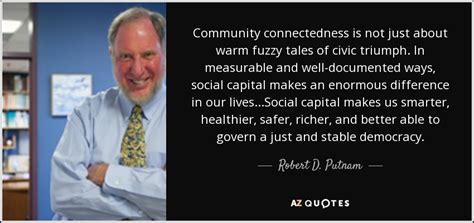
Last Thursday, I was privileged to attend two remarkable events, which together opened the door to exciting new opportunities. For the purposes of this post, it makes sense to ignore the clock and present them in reverse order because what got discussed at the second one shed light on what my friends and I could do growing out of the first.
Join or Die
I was invited to the DC premier of the documentary, Join or Die, that explores the role of social capital in the United States through the remarkable career of Robert Putnam who recently retired from his chair at Harvard’s Kennedy School of Government. Putnam is best known for his 2000 book, Bowling Alone, which charted the decline of social capital in the United States in the forty years leading up to the turn of the century. That followed an earlier book, Making Democracy Work, which explored similar themes growing out of his research in Italy. It, too, stressed the importance of social engagement, especially what he calls bridging social capital which in which people who get long with and even hang out with each other across deep divisions, ideological or otherwise.
I have known Putnam since he was a young faculty member at Michigan where he taught a course on political elites in 1971 which I loved. Our paths occasionally crossed again as his interests shifted toward political culture and threats to democracy and mine settled on peacebuilding.
For reasons unrelated to Putnam’s work, I met the co-director of the documentary, Pete Davis, shortly after he and the other co-director, his sister Rebecca Davis, had finished the rough cut. I loved it, too.

So, I gathered a bunch of my friends and we headed to Georgetown’s gorgeous and iconic Gaston Hall to watch the screening, attend a reception with Bob (and a few hundred others), and sit in on a panel discussion. We were not disappointed.
The film itself is not yet available for screening, but you can watch the trailer. Information on when and how it becomes available for streaming get more information/
If you are a real nerd, you can watch the panel discussion. It features the Davises, Putnam, and other leaders in the social capital and social change communities, some of whom had been in town for another meeting earlier int he day.
Literally
Somewhere between the rough cut and the final version, Pete and Rebecca changed the title to Join or Die which has at least four key meanings for the purposes of this post.
First, Bob and others present evidence that suggests that people who don’t join clubs or other social networks have a higher chance of dying in the next year. In other words, being part of a bowling league or a service club like Rotary or volunteering for your local community mediation center is literally good for your health.
Second and more importantly, as Putnam has argued for the last thirty years, democracy depends on our participation in organizations like those. It’s more than the Washington Post gets at in its masthead statement, Democracy Dies in Darkness. Democracy depends on having a political culture in which have a vested interest in the preserving the system, trust their leaders and their fellow citizens, think that they came a difference, and more.
Third, Bob, in particular, stresses the importance of what he and others call bridging social capital. He contrasts it with bonding social capital in which we tend to hang out with people like ourselves who share our views. Bridging social capital, by contrast, revolves around constructive relationships with people who are not like us. Here simply think about how many people who don’t share your basic values you have a strong, friendly, working relationship with.
Fourth, as Bob pointed out in the Q and A session in his first and final remarks, however successful his career may have been, he failed when it came to curbing the worrisome trends he has been documenting since he studied the new regional governments in 1990s Italy. At the same time, in closing the session, he pointed to the young people in the audience and told the young people in the room that he had confidence that they, like Pete and Rebecca Davis themselves, would find ways of pulling us out of the dangerous spiral that made him famous.
A Side Trip to Geneva Clarifies Things
Luckily, I began to see some answers to his dilemmas earlier that day. I spent a couple of hours in the early afternoon sitting on a session at Geneva Peace Week organized by Rotary International and the Alliance for Peacebuilding (AfP), two of the organizations I work with.

My friend and co-author Patricia Shafer organized the session and included four senior Rotarians as well as Liz Hume, AfP’s Executive Director. Each took one of Rotary’s key principles which obviously overlap with Putnam’s and explored how they could be used to guide peacebuilders’ efforts around the world.
- Fellowship
- Diversity
- Integrity
- Service
- Leadership
Two overarching themes emerged. First, one of the panelists kept referring to people whom he called “intersectors” who have an innate or, more often, learned ability to bring people together, especially across society dividing lines. Second, almost all of them talked about the need to create what they called distributed networks of peacebuilders and others who are dedicated to restoring social trust and other forms of bonding social capital.
Where We Go from Here
I will be part of the Rotary/AfP team that tries to put the lessons that surfaced at the Geneva panel (and in the evening with Putnam) into practice through pilot projects both here in the United States and in other divided societies. Stay tuned to this blog because I will be writing about our progress and inviting you to join us.
By the time we were in the reception, I had already formulated two questions for Bob.
- Almost a quarter century has passed since he did the research for Bowling Alone, and it would be hard to argue that we have seen any significant improvement on any of his main indicators. So, what would he recommend groups like the Rotary/AfP team do given the changes since the turn of the century?
- While we succeed in producing the cultural shift he and I both know we need, how do organizations like Rotary (which had a cameo appearance in Join or Die), AfP, and the dozens of others that are working to bridge America’s divides translate their efforts into lasting policy changes as well?
I sent Putnam a copy of this post and a longer email detailing those two questions and am waiting for his reply. Bob is in his eighties and trying to retire which is hard for someone with so many great ideas and so much energy.
So, keep coming back to this space over the next few months where you will find more discussions about bridging social capital and its implications.
The views and opinions expressed in this article are those of the author and do not necessarily reflect the official policy or position of the Alliance for Peacebuilding or its members.
